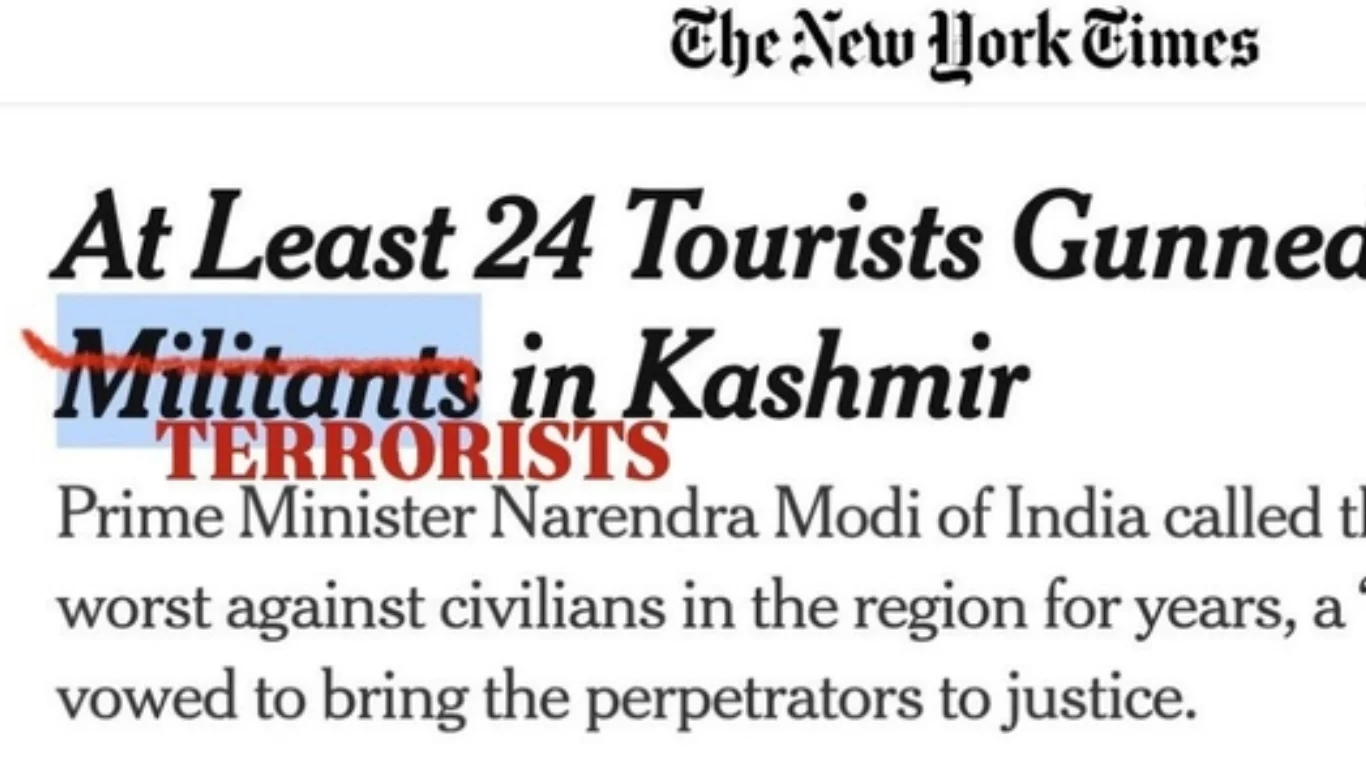
Trump Administration Blasts New York Times Over Pahalgam Attack Coverage, Reaffirms Strong Support for India
The Trump administration has sharply criticized The New York Times (NYT) over its coverage of the recent terrorist attack in Pahalgam, Jammu and Kashmir, which resulted in the deaths of 26 civilians. US officials labeled the newspaper’s reporting as “misleading” and “insensitive,” arguing that it downplayed the seriousness of the attack.
At the center of the controversy is the language used by The New York Times in its initial headline, which referred to the attackers as “militants” and “gunmen” rather than “terrorists.” The phrasing drew immediate condemnation from the US House Foreign Affairs Committee, which accused the publication of whitewashing a heinous act of terrorism.
In a strongly worded post on social media platform X (formerly Twitter), the committee shared a screenshot of the NYT headline, editing the word “militants” and replacing it with “terrorists” in bold red text. Their post read:
“Hey, @nytimes, we fixed it for you. This was a TERRORIST ATTACK, plain and simple. Whether it’s India or Israel, when it comes to TERRORISM, the NYT is removed from reality.”
The original headline, “At Least 24 Tourists Gunned Down by Militants in Kashmir,” drew fire from lawmakers and commentators alike, who accused the paper of inconsistent terminology when reporting on attacks outside Western countries.
According to US officials, the choice of language in the article not only diminishes the gravity of the incident but also disrespects the victims and their families. They stressed that the deliberate targeting of civilians in an orchestrated act of violence must be called terrorism—no matter where in the world it happens.
The incident comes as diplomatic ties between Washington and New Delhi continue to strengthen, especially in the context of global counterterrorism cooperation. Following the attack, US President Donald Trump personally called Indian Prime Minister Narendra Modi to offer condolences and to express outrage over the “heinous” nature of the assault.
The White House later released a statement reaffirming America’s solidarity with India. “The United States stands shoulder to shoulder with India in the fight against terrorism,” it said.
US Vice President JD Vance also contacted PM Modi, extending his sympathies and condemning the attack as “cowardly and inhumane.” He reiterated America’s commitment to holding the perpetrators accountable and supporting India through this difficult time.
Back in India, Prime Minister Modi issued a powerful statement during a public address in Bihar. Vowing decisive action, he said:
“From the soil of Bihar, I say this to the entire world—India will track down every terrorist and their backers. We will not stop until they are brought to justice, wherever they may be.”
Preliminary investigations by Indian intelligence agencies suggest the attack was carried out by a terrorist group with backing from across the border in Pakistan. The assailants reportedly targeted a group of tourists, including families, who were visiting Pahalgam, a popular destination in Jammu and Kashmir.
In response to the attack, security has been heightened across the region. The Indian Army and paramilitary forces have launched large-scale search and containment operations. Surveillance drones have been deployed to monitor movement in vulnerable areas near the Line of Control.
The United States has also begun coordinating with Indian authorities, offering intelligence-sharing and technical support to track the attackers and their networks. Sources in the State Department confirmed that US counterterrorism officials have been in close contact with their Indian counterparts.
The NYT’s reporting has sparked a wider debate about media responsibility and the global double standards in terrorism coverage. Senator Tom Cotton and other US lawmakers criticized the paper’s reluctance to use the term “terrorist” for non-Western incidents, calling it “soft on terror.”
“These weren’t militants or gunmen—they were terrorists who executed innocent civilians. Language shapes perception, and it’s time we stop sugarcoating acts of terror,” Cotton stated in a televised interview.
Many critics have pointed out a recurring pattern in international media coverage: when similar attacks occur in Western countries, the word “terrorism” is used prominently. But in regions like South Asia or the Middle East, softer terms such as “militants” are often employed, potentially diminishing the severity of such acts.
This inconsistency has led to calls for global media outlets to reevaluate their editorial policies. Advocacy groups in the US and India are demanding more accountability and sensitivity in reporting acts of terrorism, especially those involving mass civilian casualties.
In India, The New York Times has come under intense criticism from politicians, journalists, and citizens alike. Social media was flooded with posts slamming the newspaper for failing to stand in solidarity with the victims or acknowledge the attack for what it was—a calculated terrorist massacre.
Despite the widespread backlash, the NYT has yet to issue a formal clarification or update its language. This silence has further fueled public outrage.
As the investigation into the Pahalgam attack continues, Indo-US cooperation in counterterrorism is expected to deepen. Both nations appear committed to not only pursuing those responsible for this particular attack but also reinforcing a broader global stance against terrorism in all its forms.
In the face of tragedy, the message from both Washington and New Delhi remains firm: terrorism will not be tolerated—neither on the ground nor in the narrative.

















